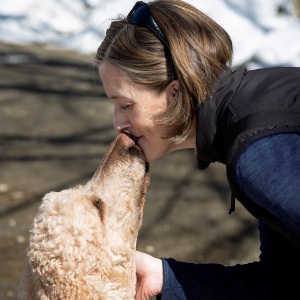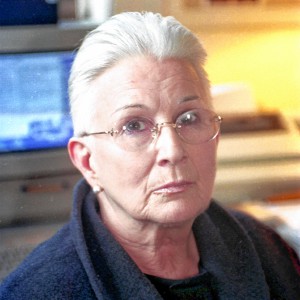To Your Good Health: Heartburn and Indigestion: Is There a Cure?
| Published: 01-13-2018 10:35 PM |
Dear Dr. Roach: What cures heartburn and indigestion? — R.G.
Answer: It’s easier to answer what causes heartburn and indigestion, because treatment depends on the underlying problem. The most common cause of heartburn is gastroesophageal reflux disease. The contents of the stomach, which normally are strongly acidic, go backward into the esophagus, the long, muscular tube that connects the back of the throat with the stomach. The burning sensation is caused by sensory nerves in the esophagus, which is not supposed to have acid and can be damaged by recurrent exposure to it.
Not everybody with GERD gets heartburn: Some people have a cough; some people have the sensation of food and acid going all the way into the back of the mouth, but some have less-typical symptoms, including voice changes, difficulty swallowing, excessive salivation, chest pain mimicking angina and nausea.
GERD usually is caused by relative weakness in the lower esophageal sphincter, a muscular valve structure at the bottom of the esophagus. If the pressure in the stomach pushing contents upward is greater than what the valve can prevent, then acid will flow backward into the esophagus.
In addition to GERD, indigestion can be caused by stomach or duodenal (the first part of the small intestine) ulcers, gallstones, inflammation of the stomach, pancreatic disease, side effects of medications and many other things.
The first step in treating indigestion and heartburn is to make a diagnosis. Often, clinicians will give a trial of medication to treat symptoms. This may be antacids (which work immediately but wear off quickly); proton pump inhibitors, such as omeprazole (Prilosec); or a class of medications called H2 – for “histamine type 2” — blockers, which include ranitidine (Zantac) and famotidine (Pepcid).
Rapid relief of symptoms while on these medications is strong but imperfect evidence that the symptoms are being caused by a stomach-acid-related problem (GERD, gastritis and stomach ulcers being the most common). Persistent symptoms should trigger a more thorough workup, potentially including an examination of the esophagus, gastrum (stomach) and duodenum. This is done with a type of endoscopy usually called an EGD, or upper endoscopy, as opposed to a lower endoscopy (colonoscopy).
GERD symptoms usually are not cured, since “cure” means permanent relief from symptoms of the condition as well as resolution of the underlying mechanism. The only treatment likely to cure GERD is surgery to increase the ability of the lower esophageal sphincter to resist acid flow.
Article continues after...
Yesterday's Most Read Articles
 Starbucks store planned for Route 120 at Centerra
Starbucks store planned for Route 120 at Centerra
 Enterprise: Upper Valley pet sitters discuss business growth, needs
Enterprise: Upper Valley pet sitters discuss business growth, needs
 A Life: Priscilla Sears ‘was bold enough to be very demanding’
A Life: Priscilla Sears ‘was bold enough to be very demanding’
 2024 Upper Valley high school baseball guide
2024 Upper Valley high school baseball guide
 Canaan Elementary School has new principal
Canaan Elementary School has new principal
Newer techniques allow this procedure to be done endoscopically. However, people who have had this surgery often develop other symptoms, including bloating and gas from the inability to belch and relieve swallowed air. However, GERD symptoms usually are manageable with lifestyle changes and medications.
Dear Dr. Roach: I am a 73-year-old male and have been diagnosed with pulmonary fibrosis. My doctor wants me to begin a very expensive medication called Esbriet. From what I’ve read, it could cause very serious side effects. I feel great — no shortness of breath, a little coughing when breathing in cold air or around my cat. I would just like your thoughts on the disease and the medication Esbriet. — J.R.
Answer: I haven’t discussed pulmonary fibrosis since pirfenidone (Esbriet) was approved. Several trials have shown that it improves lung function, exercise ability and disease-free survival in people with mild to moderate disease. It can cause a rash, nausea and diarrhea, and it is, as you say, very expensive. However, if you can afford it, or have insurance that will adequately cover it, I recommend pirfenidone for people with pulmonary fibrosis.
Dear Dr. Roach: I’m a very active 79-year-old woman who had a colonoscopy three months ago and is still suffering with pain on my right side. I have had a CT scan and an ultrasound, and they say there is nothing wrong. Do you have an answer? — N.F.
Answer: There are a few complications of colonoscopy that should be considered in a person with pain after the procedure. If a polyp was removed, tenderness and fever can persist for a few days.
Perforation of the colon is uncommon: It happens in 1 in 1,000 to 1 in 10,000 colonoscopies performed for screening. Pain, fever and nausea with vomiting are the most common symptoms. These usually begin right after the colonoscopy. A rare complication is damage to the spleen (the spleen is adjacent to the colon in the left upper quadrant of the abdomen) or liver (in the right upper quadrant). The CT scan should have shown a perforation of the colon or damage to the spleen or liver.
I don’t have an answer; I have what might be charitably described as a wild guess, which is that the bacteria of the colon drastically change after colonoscopy, and that after three months you may have a different set of bacteria there. (It’s called the microbiome, and increasingly is recognized as important to many functions of the body.)
If your pain isn’t too bad, I would consider a course of probiotics (healthy bacteria) to repopulate the bowel. If the pain is moderate or severe, it’s time for another visit to your doctor and possibly another evaluation.
Dear Dr. Roach: I am a 75-year-old woman with purple bruise marks all over my forearms. The number varies, but they are always present to some extent, and have been for several months. They first started with small spots that went away after a short time around two years ago.
My mother had them at my age, and she told me it was from taking prednisone, but she took a lot more prednisone than I have taken. I can’t get a doctor to tell me what the spots are or to confirm that they are from taking prednisone. I would like to find the cause so that maybe I can find a cure, or at least satisfy my curiosity. — D.L.D.
Answer: These sound like senile purpura, caused by broken blood vessels in the skin. Prednisone certainly might increase these, but anyone may get them. I read one study that bioflavonoids (as a supplement, or present in many fruits) can help.
Dr. Roach regrets that he is unable to answer individual letters, but will incorporate them in the column whenever possible. Readers may email questions to ToYourGoodHealth@med.cornell.edu or at 628 Virginia Dr., Orlando, FL 32803.

 City plans to widen and replace bridge on Trues Brook Road
City plans to widen and replace bridge on Trues Brook Road
